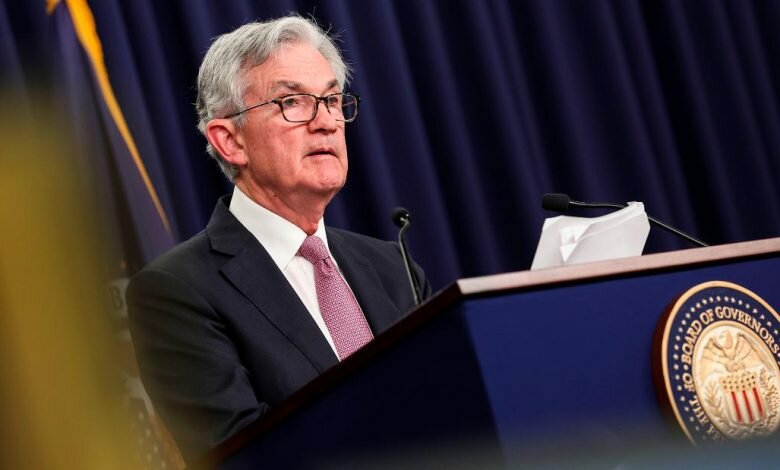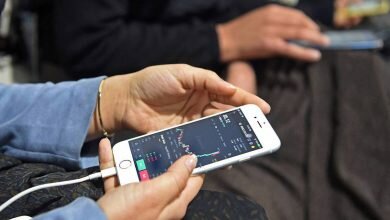The Fed Has a New Plan to Avoid a Recession: Party Like It 1994

Earlier this month Federal Reserve Chairman Jerome Powell announced a half percent increase in interest rates, the biggest increase in two decades. Powell also indicated he would not hesitate to do it again – a step straight out of the central bank’s 1994 playbook, when the Fed finalized the US economy and successfully executed a so-called soft landing.
In the 12 months following February 1994, the Fed, under former chairman Alan Greenspan, nearly doubled interest rates to 6% in just seven hikes, which included two half-point increases and one three-quarter-point increase. .
Following Powell’s comments, Morgan Stanley analysts wrote in a note, “Eat Your Heart Out, 1994.”
Inflation is near a 40-year high and most economists agree that the Fed should raise interest rates to reduce economic demand and maintain price stability. They just don’t agree on what this will mean for the economy at large.
The history of central bank rate hikes appears to support the inevitability of an economic recession, but there are rare instances when the Fed has made a soft landing: once in 1965, and again in 1984 and 1994.
Over the next few months, the Fed will attempt to cool the economy which will lower prices but will not spiral into recession. It’s a Goldilocks task that some, including former New York Federal Reserve Bank chairman Bill Dudley, believed would be nearly impossible to execute.
Larry Summers, a noted critic of Powell’s Fed, has pegged the likelihood of central bank actions leading to a hard landing at 100%. Analysts at Goldman Sachs say this is a close to a one in three chance.
But Powell is convinced that there is more to it than replays of 1994’s The Lion King and Ace of Base.
“I believe the historical record provides some basis for optimism: soft, or at least soft-ish, landings have been relatively common,” Powell said in his March speech.
But there are some major differences between 1994 and 2022, and timing may be the most important factor.
Greenspan actively raised rates. He saw that the economy was booming and wanted to overtake the inevitable inflation. Powell has been more responsive. He raised rates by half a percentage point only after inflation reached levels unseen in decades. There is a possibility that the Fed may be too behind the curve to be able to reduce inflation without putting economic hardship on Americans.
Employment today is not what it was then. In 1994, baby boomers were at the heights of their careers, loads of new technology were being introduced into the workplace, and immigration numbers were strong. All of this led to a huge workforce and productivity rates that kept unemployment low despite interest rates rising. In 2022, we faced boomers who are ready to exit the workforce, a significant pandemic—low labor participation rates and a productivity slowdown.
“In the past, when you’ve raised the unemployment rate, you’ve almost never been able to avoid a full recession,” Dudley said. “The problem facing the Fed is that they are just too late.”
shaken by world events
Geopolitical luck was also a factor in the ’94 soft landing, and despite the best efforts of economists, the fate cannot be easily replicated.
The North American Free Trade Agreement (NAFTA) was adopted in 1994 and the Berlin Wall fell just five years earlier. Both events increased the availability of imports and lowered the cost of goods. Today globalization is on a retreat as the pandemic and war in Ukraine have caused significant energy price shocks and supply chain disruptions.
“On closer inspection, the Greenspan Fed was the beneficiary of considerable good fortune, which the current Fed is unlikely to enjoy,” Carl Tannenbaum, chief economist at Northern Trust, wrote in a research note. “None of this suggests that a soft landing is impossible this time around. But the degree of difficulty is much greater than it was 28 years ago.”
There may still be room for a soft landing, as long as you’re willing to tweak the definition a bit. We’ve seen 11 examples of the Fed’s tough policy since 1965 (not including current moves), said Princeton economist Alan Binder. Seven of them resulted in less than 1% decline in economic output, a relatively small drop. “It may not be so difficult to achieve such a soft landing,” he concluded.
After all, a soft-ish landing may be the best we can hope for.
Source




